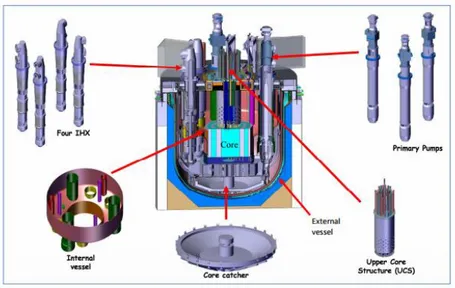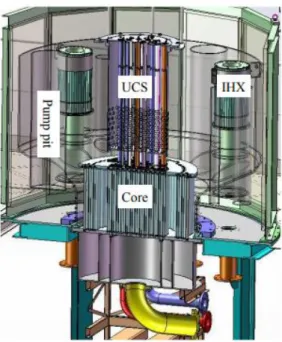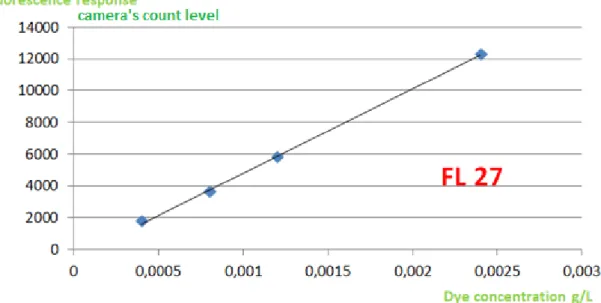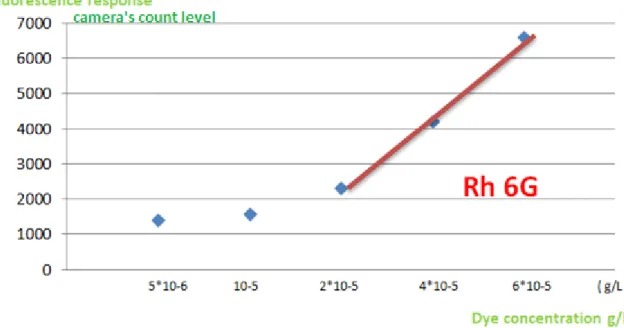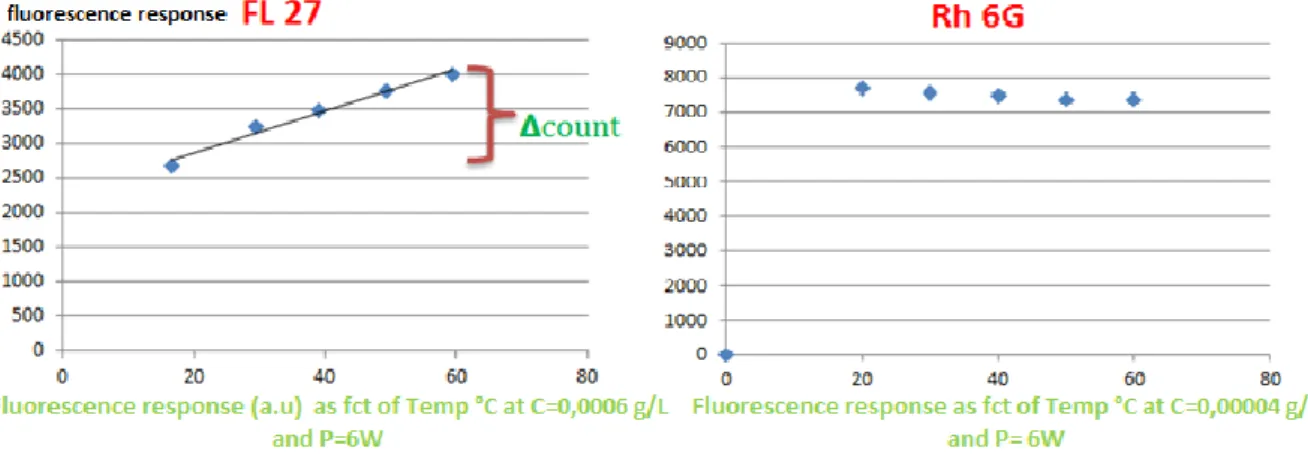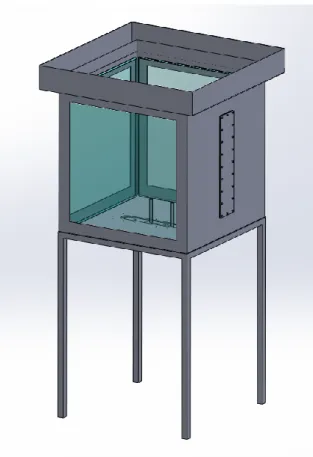HAL Id: hal-02415317
https://hal.archives-ouvertes.fr/hal-02415317
Submitted on 17 Dec 2019
HAL is a multi-disciplinary open access archive for the deposit and dissemination of sci-entific research documents, whether they are pub-lished or not. The documents may come from teaching and research institutions in France or abroad, or from public or private research centers.
L’archive ouverte pluridisciplinaire HAL, est destinée au dépôt et à la diffusion de documents scientifiques de niveau recherche, publiés ou non, émanant des établissements d’enseignement et de recherche français ou étrangers, des laboratoires publics ou privés.
Two colors LIF techniques applied on tow jets mixing
flows challenges and experimental program on a complex
mock-up
M. Chitt, B. Cariteau, D. Guenadou, G. Ricciardi, L. Rossi
To cite this version:
M. Chitt, B. Cariteau, D. Guenadou, G. Ricciardi, L. Rossi. Two colors LIF techniques applied on tow jets mixing flows challenges and experimental program on a complex mock-up. 19th International Symposium on Applications of Laser and Imaging Techniques to Fluid Mechanics, Jul 2018, Lisbonne, Portugal. �hal-02415317�
1
Abstract for the 19th LISBON Laser Symposium
Two color LIF techniques applied on a two jets mixing flow:
Challenges and experimental program on a complex mock up
M. CHITT 1, B. CARITEAU 2 , D. GUENADOU 1 , G. RICCIARDI 1 , L. ROSSI 1
1 CEA Cadarache, DEN, DTN\STCP\LTHC, 13115 Saint-Paul-lez-Durance, France.
mira.chitt@cea.fr david.guenadou@cea.fr guillaume.ricciardi@cea.fr lionel.rossi@cea.fr
2 CEA Saclay, DEN, DM2S\STMF\LIEFT, 91191 Gif-sur-Yvette Cedex, France. benjamin.cariteau@cea.fr
There is no doubt that energy has been driving and will drive the technological progress of the human civilization. It has been projected that the energy demand will almost double by the year 2040 (based on 2010 energy usage), which must be met by utilizing the energy sources other than the fossil fuels such as coal and oil.
Thus many countries realized the importance of clean nuclear energy due to its sustainability and usage in power generation with less contribution to greenhouse gas emissions when compared to fossil fuel power generation [1]. The nuclear power industry has been developing and improving reactor technology for more than six decades which lead to several generations of nuclear reactors.
Nowadays, Generation IV reactors present the futuristic reactors for which research and
development efforts are currently in progress. These reactors will be more efficient, safer and longer lasting (60 years and beyond). Six reactor designs were selected at the outset. They differ in terms of reactor spectrum (either fast or thermal spectrum), coolants, and approximate core outlet
temperatures.
Regarding nuclear power in France, it is the largest source of electricity in the country with a generation of 416.8 TWh (terawatt hours), or 76.3%of the country's total production of 546 TWh, the highest percentage in the world. The country has been very active in developing nuclear
technology and nowadays a new project of construction of a 4th generation prototype reactor cooled by sodium is being studied to support Generation IV deployment in the middle of the century. The reactor is named ASTRID, Advanced Sodium Technological Reactor for Industrial Demonstration and it is a 600MWe pool type reactor which intends to be an industrial demonstration.
This concept includes French and International feedbacks and main advances on the safety and operative point of view.
CEA is the leader of this project involving many partners (EDF, AREVA, BOUYGUES,…). The design integrates not only the know-how and the feedback of the previous French SFR (PHOENIX, SUPER-PHOENIX) but also the cutting edge technologies.
Figure 1 is a sketch of the actual design of ASTRID. The sodium flows from the external vessel to the upper plenum through the core where it is heated. Around 90% of the sodium ejected from the core is deviated by the Upper Core Structure (UCS) to the upper plenum. The other part flows across the UCS, then to the upper plenum. The hot sodium (550°C) of the upper plenum enters inside the Intermediate Heat Exchangers (IHX) to heat a secondary sodium circuit. This latter is connected to a steam generator. This scheme avoids the primary sodium to be in contact with water in case of leakage. The outlet of the IHX is connected to the external vessel where the sodium is pumped and sent back to the core [2].
2
Figure 1: Cut view of the ASTRID primary circuit
There are thermal-hydraulics issues of upper plenum of the sodium cooled reactor ASTRID which cannot be studied from past reactors feedback and numerical simulations since the calculation codes do not allow to model these problems with sufficient confidence. Thus in order to validate the numerical approaches and systems concept of ASTRID to fit the codes and simulations for validation and to better understand the complex thermal hydraulic phenomena in order to qualify the design options, we need to investigate temperature and velocity in this complex geometry. For these reasons, a prototype is needed to study the thermal hydraulic behavior of the ASTRID reactor. Sodium experiments are very complicated to perform since sodium is opaque and reacts violently with water, thus it was more useful to perform measurements on a water model. In addition to this, sodium and water have similar properties in terms of viscosity and density as shown in the table below:
Physical properties Density (kg/m3) Viscosity (*10-4 Pa.s)
Sodium at 550°C 823 2.2
Water at 60°C 983 4.7
Also, a dimensional analysis was done regarding the physical properties between sodium and water so as to get a similitude between ASTRID and the model. In this study, a dimensionless quantity X* was defined by the ratio between the variables of the mockup and ASTRID, that is X*= Xmock-up/XASTRID. Richardson number was used to study the thermal flow aspects, thus all the parameters characterizing the flow (Re, Q, ..) can be calculated by setting Ri*=1.
From what preceded, the MICAS model was designed. The MICAS mock up is a water model of ASTRID, made up of PMMA (Poly methyl methacrylate) for optical measurements, about 2.5 m diameter and 1.7 m height and a scale of around 1/6. Figure 2 shows a cross view of the MICAS mock-up and figure 3 a top view of the model. The core is supplied by two different water
temperatures: a hot one in the central zone and a cold one in the outer areas. This mock up is built to study several issues such as thermal behavior between the hot and the cold jets. Those will be investigated using optical measurements since they are non-intrusive.
3
Figure 2: Cross-view of the MICAS mock-up
Figure 3: Top view of MICAS mock-up
One challenge is to implement non-intrusive optical techniques to simultaneously measure
temperature and velocity on complex geometry featured by the MICAS Mock up. There exist several optical methods for temperature measurement and the best to be used in our case is Laser Induced Fluorescence (LIF) since it is a quantitative, non-intrusive technique used in liquid flows and gives precise results. In all forms of LIF, a laser is used to excite a fluorescent species within the flow. Typically, the tracer is an organic fluorescent dye such as fluorescein or rhodamine. The dye absorbs a portion of the excitation energy and spontaneously re-emits a portion of the absorbed energy as fluorescence [3]. The fluorescence is measured optically and used to infer the local concentration of the dye. The fluorescence intensity F at a specified point is defined as equation 1.
𝐹 = 𝐼0𝜑(1 − 𝑒−𝜀𝑏𝐶) (1)
4
where I 0 is the incident light flux, 𝜑 is the quantum efficiency, 𝜀 is an absorption coefficient, b is the thickness of the laser sheet and C is the concentration of the dye solution. Thus, a linear equation is obtained when the product 𝜀𝑏𝐶 is small as seen in equation 2. A dye is a necessary component of LIF. The suitability of a dye is based on an absorption spectrum that is compatible with the laser
excitation wavelength. The fluorescent tracer must be water-soluble with high quantum efficiency so that signal strength is maximized. It must exhibit enough temperature dependence over a suitable temperature range and must be photo-stable under experimental conditions that yield detectable emission. Plus, the absorption and emission of the dye must be spectrally separable. Regarding the types of LIF technique, there exist three main methods focusing on the dyes used. One color LIF technique is the method in which one single fluorescent dye and one spectral band of detection are used. In general, the linearity of the fluorescence signal with respect to the incident laser energy and dye concentration is reported. Such experiments were the first to be conducted in the temperature measurement field. From these experiments, researchers were able to identify the characteristics of the organic dyes such as the excitation wavelength, temperature dependent emission percentage and temperature range [4]. However, this method exhibits several constraints. For instance, the incident laser intensity must be maintained constant during the experiment. This introduces
systematic errors in the temperature measurements when a pulsed excitation is used. Also, an initial reference image taken under constant concentration and temperature conditions must be used for normalization since the energy distribution in the laser sheet is not uniform. Thus alternative techniques have been developed.
In the two color two dye LIF techniques, the temperature is determined from the ratio of the signal of two dyes, which have highly different temperature sensitivities [5]. That is one of the dyes should be sensitive to temperature and the other should not or only very weakly. This technique eliminates Beer’s absorption as well as the laser intensity dependence.
The two-color one dye laser-induced fluorescence technique uses a single fluorescent tracer and two spectral bands of detection [6]. Here, the ratio of the fluorescence signal measured on the two spectral bands depends only on temperature and solves the problem of the dependence on the concentration, since a single dye associated with two spectral bands and two different temperature sensitivities is used. The technique is perfectly suitable for measuring the temperature of droplets [7]. Nowadays this method is being highly used in the two-phase applications (droplets,..).
In our experiments and from what has preceded, single dye and two dye two color LIF techniques seem very appealing since in addition to the accuracy of these techniques, it is also interesting to make comparison between the results of each one. Starting from this point, experiments regarding one color LIF were carried out.
The main goal of these experiments was to perform calibration in a way to study the fluorescence response of three dyes: Classical Fluorescein, FL27 and RH6G as function of three main parameters: dye concentration, laser power and temperature variation.
Classical fluorescein, FL27 and Rh6G were found to be widely used in literature when performing such experiments and the issue always remains to improve temperature sensitivity. The dyes were in powder form so in order to prepare a homogeneous solution, a concentrated one is prepared at first for each dye, then it is diluted several times to get the required range of concentration needed for the study.
ALaVision’s Imager sCMOS camera and a continuous 532 nm green argon laser with an output power ranging between 2 to 8W were used as shown in figure 4.
5
Figure 4: set up of LIF
Regarding optics, two band pass filters were used: the first 570nm for Rh6G and the second 520nm for classical FL and FL27. Also, two mirrors were put in position to best enhance laser pathway. Then studies were done on each dye at room temperature and ambient conditions by varying the
concentration of each and testing the response as function of laser intensity too. Then after getting the range of dye concentration in which the linearity between the fluorescence response and
concentration exists, certain values are chosen to again test the fluorescence response as function of laser power and then as function of temperature variation each at a certain power intensity.
In what follows are some results of preliminary experiments done with analysis concerning each parameter.
6
Figure 6: Fluorescence response as function of dye concentration for Rh6G
Regarding the organic dyes FL27 and Rh6G, a linear approach of fluorescence response can be viewed when the concentration of the dyes varies between 0,0006 and 0,0025 g/L for FL27 and between 2*10−5 and 6*10−5 g/L for Rh6G. Thus this defines the domain of interest regarding concentration of organic dyes to be used later in future experiments. In general, fluorescence response increases with the increase in concentration because absorption of the laser along the cuvette becomes important.
Then other experiments were done by varying the laser intensity too from 2 till 8 W.
Figure 7: Variation of fluorescence response as function of laser power for FL27
As the dye concentration increases, the response of the emitted fluorescence increases with respect to incident laser power.
7
Other experiments were performed to study the fluorescence response of dyes FL 27 and RH6G as function of temperature variation.
Figure 8: Variation of fluorescence response as function of temperature for FL27 and Rh6G
Regarding FL27, 𝝙 count increases with increase in dye concentration and fluorescence response increases with increase in temperature. The temperature sensitivity is estimated 1.6 %/ °C, a value almost similar to that found in literature and as for Rh6G, 𝝙 count decreases very slowly with the increase in temperature. The temperature sensitivity is estimated -0,075 %/ °C [8]. Here, the ratio between the fluorescence responses eliminates the influence of the laser intensity. Thus the temperature sensitivity of the dye is not affected by the laser irradiance.
For the coming steps, two color one dye LIF technique will be carried out using FL 27 (temperature dependent dye) and Rh6G (temperature insensitive dye), each of concentration belonging to the range found by the experiments done and with a laser power giving an approximate linearity relation between the fluorescence response and temperature variation.
As the MICAS Mock-up exhibits complex mixing flows, a first simple step experiment was designed to study such configurations. The objective of this experiment is to design a representative prototype from the point of view of the dimensional analysis of the thermal hydraulics (jet flow, plumes, buoyancy,…) of the core of the MICAS model. For this fact, the mixture of the two jets of different temperatures must be studied. The first jet is being hot and the second cold such as the case in the MICAS mock-up and then optical methods for measuring temperature (LIF) and velocity (PIV) simultaneously will be applied on the prototype. The prototype aims to study the interaction between two jets at different temperatures and these can be vertical or horizontal. In this study, three main dimensionless values will be studied, Reynold’s number, Richardson number and Froude number. The flow in one jet will be laminar and in the second turbulent and then by changing the flow rate of each jet, several cases will be studied such as the interaction between a fountain and a jet, buoyant plumes in a turbulent environment,… and these studies will be achieved by the variation of Richardson number through changing the distance separating the two jets which is a main factor here. Another challenge exists in the application of LIF and PIV simultaneously on this test section. For this reason, the characterization system requires two perpendicular transparent faces. The prototype consists of a tank having transparent walls for optical access which allows the
implementation of LIF and PIV simultaneously. It is connected to a hydraulic loop consisting of three tanks. The configuration and all the details of the test section can be shown in figure 9.
8
Figure 9: 3D view of main test section
The last step will be the application of LIF and PIV on the complex geometry MICAS Mockup after profiting from the data collected and experiences acquired from previous stages.
References:
[1] K. Linga Murty and Indrajit Charit, “Overview of Nuclear Reactor Systems and Fundamentals”, An Introduction to Nuclear Materials: Fundamentals and Applications, First Edition, Wiley-VCH Verlag GmbH & Co. KGaA, 2013.
[2] D. GUÉNADOU ,I. TKATSHENKO,P. AUBERT, “Plateau Facility in Support to Astrid and the SFR Program: An Overview of the First Mock-Up of the Astrid Upper Plenum, Micas”, Proceeding of Nureth 16, Chicago, August 30–September 4, 2015. [3] P. Crimaldi, “Planar laser induced fluorescence in aqueous flows”, Experiments in Fluids, Vol. 44, Issue 6, pp. 851– 863, June 2008.
[4] J. Sutton, B. Fisher and J. Fleming, “A laser induced fluorescence measurement for aqueous fluid flows with improved temperature sensitivity”, Experiments in Fluids, Vol. 45, pp. 869-881, Nov 2008.
[5] J. Copetta and C. Rogers “Dual emission laser induced fluorescence for direct planar scalar behavior measurements“, Experiments in Fluids , Vol. 25, Issue 1, pp. 1–15, June 1998.
[6] P. Lavieille, F. Lemoine, M. Lebouché and G. Lavergne , “ Evaporating and combusting droplet temperature measurement using two colors laser-induced fluorescence”, Experiments in Fluids, Vol. 31, pp. 45–55, 2001.
[7] V.Deprédurand, P.Miron, A. Labergue, M. Wolff, G. Castanet, et al. “A temperature-sensitive tracer suitable for two-colour laser-induced fluorescence thermometry applied to evaporating fuel droplets“, Measurement Science and Technology, IOP Publishing, Vol. 19, pp. 105-403, 2008.
[8] J.Sakakibara R.J Adrian, “Whole field measurement of temperature in water using two color LIF”, Experiments in Fluids, Vol. 26, Issue 1-2, pp. 7–15, January 1999.
